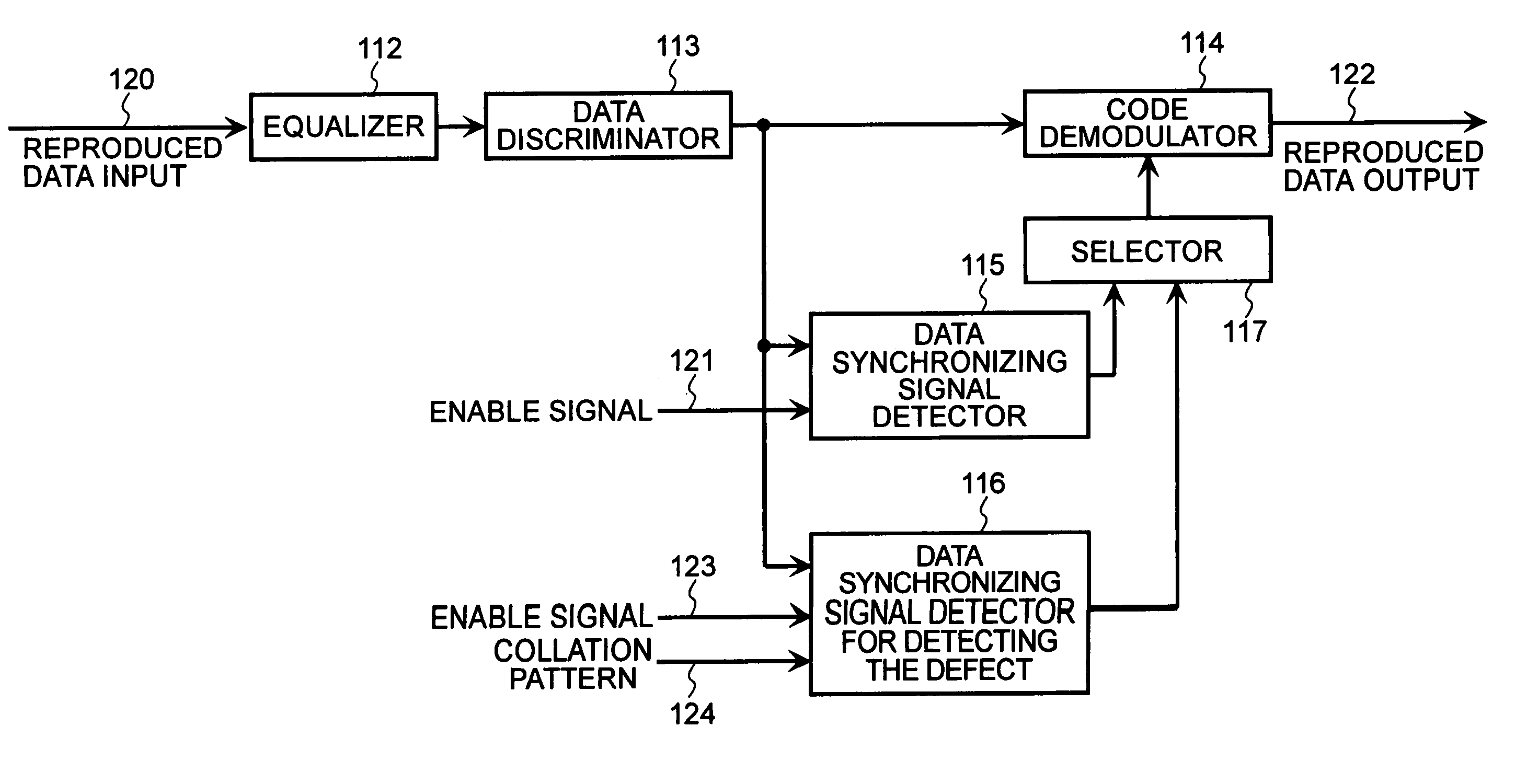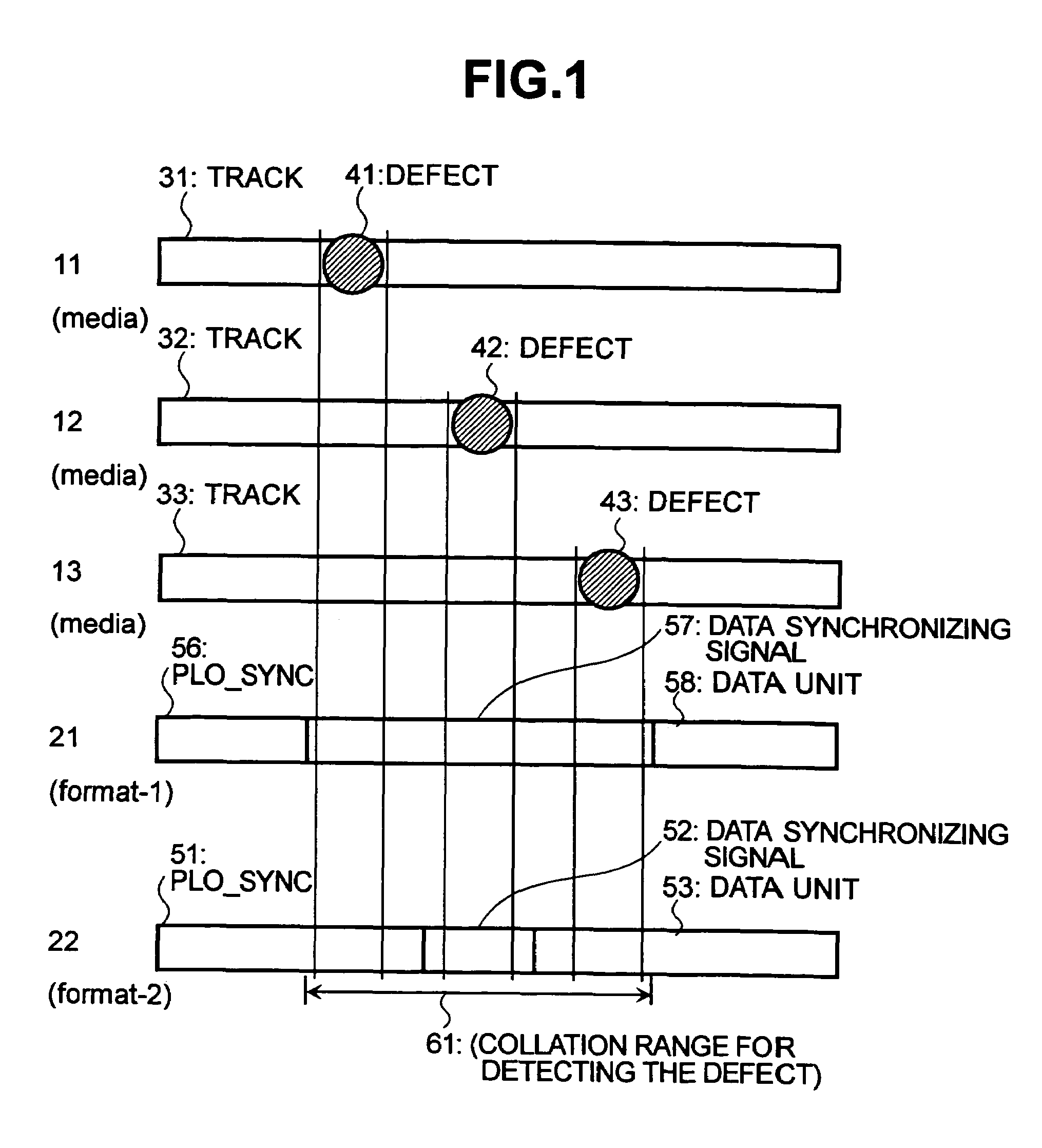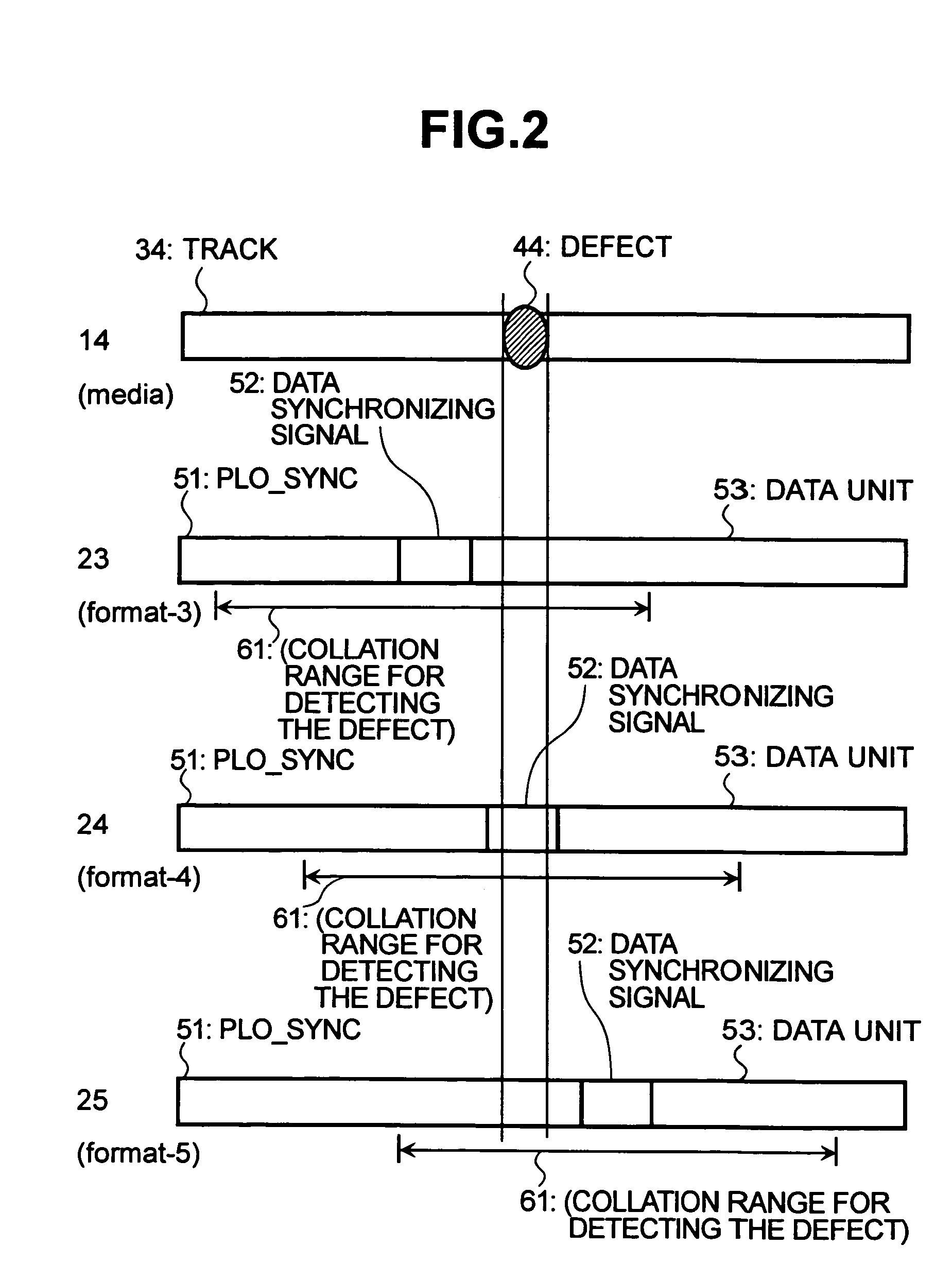Error detecting method and device, information storing and reproducing device and magnetic disk drive
a technology of error detection and information storing, applied in the field of error detection methods and devices, information storing and reproducing devices and magnetic disk drives, can solve the problems of not being suited for storing information, affecting the reliability of information storing devices, and affecting the performance of detecting, so as to reduce the steps for detecting defects, improve the reliability of information storing devices, and improve the effect of detecting performan
- Summary
- Abstract
- Description
- Claims
- Application Information
AI Technical Summary
Benefits of technology
Problems solved by technology
Method used
Image
Examples
first embodiment
[0041]FIG. 1 illustrates the storing position of the storage medium and the format according to the invention. In an information storing / reproducing device using a disk-like storage medium such as a magnetic disk drive, information is stored in a region called track arranged in concentric on the disk-like storage medium. A storage medium 11 in FIG. 1 depicts a portion of the track in which information is stored on the recording medium. A track 31 has a defect 41 at an illustrated portion that is not suited for storing and reproducing information. A format in which information is stored on the track 31 is represented by a format 22. The format 22 includes a PLO-SYNC portion 51, a data-synchronizing signal portion 52, and a DATA portion 53. When the format 22 is stored on the track 31, the portion of the defect 41 comes into the region of PLO-SYNC 51. When the data are to be reproduced in the thus stored state, the defect 41 is drawn by the PLL that synchronizes the clocks and comes t...
second embodiment
[0069]Next, described below with reference to FIG. 6 is the constitution of the defect detecting device according to the FIG. 6 is a diagram illustrating the constitution of the reproduction system inclusive of data-synchronizing signal detection means for the defect detecting device. Information constituted like the format 22 of FIG. 1 is reproduced, and is inputted to the equalizer 112 as a reproduced data input 120. The equalizer 112 equalizes the signals and outputs them. A data discriminator 113 receives the output from the equalizer, discriminates the data, and produces a result of data discrimination. The output of data discrimination is inputted into a selector 119, a delay unit 118, a data synchronizing signal detector 115 and to a data-synchronizing signal detector 125 for detecting defect. The data-synchronizing signal detector 115 is a data-synchronizing signal detection means which is used for normally reproducing the data, and receives an enable signal 121. If necessa...
third embodiment
[0072]The defect-detecting device according to the invention will be described next with reference to the drawings.
[0073]Like the second embodiment of the invention, the third embodiment of the invention uses the format 22 of the structure same as that of the case of normally reproducing the data of FIG. 1. The data-synchronizing signal, too, is detected in the same manner as the case of normally reproducing the data. Here, however, the presence of error is detected by conducting a separate pattern collation over a range represented by the collation range 61 for detecting the defect. In particular, the patterns are collated concerning the end portion of the PLO-SYNC 51, data-synchronizing signal 52 and head portion of the DATA portion 53. In this case, too, the defect is detected. Therefore, known data are used and are set as collation patterns. The collation range 61 for detecting the defect is set to be equal to the range of the data-synchronizing signal 52 for detecting the defec...
PUM
 Login to View More
Login to View More Abstract
Description
Claims
Application Information
 Login to View More
Login to View More - R&D
- Intellectual Property
- Life Sciences
- Materials
- Tech Scout
- Unparalleled Data Quality
- Higher Quality Content
- 60% Fewer Hallucinations
Browse by: Latest US Patents, China's latest patents, Technical Efficacy Thesaurus, Application Domain, Technology Topic, Popular Technical Reports.
© 2025 PatSnap. All rights reserved.Legal|Privacy policy|Modern Slavery Act Transparency Statement|Sitemap|About US| Contact US: help@patsnap.com



